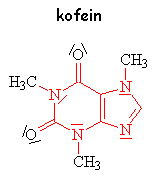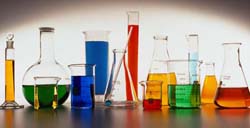Composition

Around 400 substances contained in tea leaves, so-called active ingredients, are known. They include caffeine, polyphenols (tannins), flavanols, flavonoids, theophyline and theobromine (similar to caffeine), fats, waxes, saponines, essential oils, carotene, the C, B1, B2, B5, B10, B12, E and K vitamins, enzymes, iron compounds, K, F, Na, Ca, Cu, Ni, Zn and trace elements.
The content of polyphenols varies depending on the tea type. Thanks to these substances tea has positive effects – it helps prevent cancer, cardiovascular diseases, infections, caries and many other conditions.
Polyphenols (tannins) are present in all genuine teas and cause their slightly bitter, astringent taste and distinct scent. After ingestion they are absorbed by organs. They are excellent antioxidants.
Tannins have antiinflammatory effect, help soothe the stomach and intestines and heal the airway mucosa during cold. Theophylline stimulates blood circulation and relaxes muscle spasms. Dental caries is prevented by fluorine present in tea.
The taste, flavour, colour and effects of tea are influenced by many different substances. They can be divided into several groups:
Caffeine (up to 7 %) is the main active ingredient in tea. Originally it was supposed that it was a tea-specific substance. The chemical formula for caffeine was used for it and denoted “thein”. Its content in tea can be up to 7 %. The majority of teas contain under 5 % of caffeine. However, 10 to 15 percent of caffeine remains bound in leaves and is never released during normal infusion. Up to 80 % of caffeine is released in the first 30 seconds of infusing. It is easy to get most caffeine from tea by a short flushing, while other aromatic components dissolve much more slowly.
It is not exactly correct to claim that caffeine is harmful. The most recent research shows quite the opposite. It stimulates the nervous system, fends off fatigue and insomnia, increases vigilance and the ability to think. It stimulates metabolism, excretion and the function of kidneys. It also stimulates the lungs and heart, brings more oxygen to the brain, improves attention span and reaction time.
Because of its effects, caffeine is one of the most studied substances used by people. This alkaloid is contained in more than sixty unrelated plants. In 1937, it was proved that it is identical with the alkaloid contained in coffee beans, in which it was discovered as early as the beginning of the 19th century.
The effect of tea on the human psyche is well described in Karel Valter’s book Vše o čaji pro čajomily (All about tea for tea lovers):
“... when using 12.5 grams of average tea per 1 litre of water, a 200ml cup of tea will contain around 60 mg of caffeine, which is about half the amount contained in a standard 7-gram coffee. In an average healthy person, this amount has a slightly stimulating effect manifested by an improvement in mental operations and memory, clarification of ideas, and a general feeling of being revitalised, both mentally and physically. With larger doses (150–200 mg), these favourable effects intensify, but in sensitive people slight intoxication can appear, manifesting as tremor, restlessness, a pounding heart and unusual tendency to chatter.
With even higher doses (around 500 mg and more), rushing thoughts, sweating, anxiety, shaking, even symptoms similar to delirium appear. The lowest described lethal dose of caffeine in humans is around 3 g, but it is estimated that an average adult dies after around 10 grams.”
Catechin polyphenols

They make up to 30 % of dry weight, very often they are incorrectly called tannins. These substances have a major influence on tea flavour and colour, they are its most interesting elements and have a very positive effect on human health. These substances have a proven anti-cancer effect, mainly in their non-oxidised form, i.e. in green teas. They have antibacterial and antiviral effects and reduce cholesterol levels in the blood.
During oxidation, they undergo a number of transformations. One third to one half of polyphenols oxidise into more complex substances. Unoxidated polyphenols cause the typical astringnt taste and bitterness of green tea. Depending on the extent of oxidation, polyphenols react chemically, thus changing the taste of the tea that is being processed. The diversity of tea flavours is immense.
Fragrant volatile substances
They constitute only 0.01–0.05 % of total weight, but they substantially affect scent and taste. So far, 467 fragrant substances and about 200 other substances contributing to the taste of tea have been discovered. These substances occur in different teas in various concentrations, they are freely and randomly formed, blended, concentrated and diluted depending on climate, soil, processing, ageing and infusing. In the end, it all comes down to individual sensitivity. Not every tea drinker perceives fragrances with the same intensity and many people don’t notice certain substances at all. Some people feel virtually nothing.
The variety of scents one can encounter over a cup of tea is broad, but well described by tea experts and tasters. Professional teas tasters commonly use terminology quite similar to the one used by the tasters of wine. A scale inspired by wine tasting has been introduced, particularly for Darjeeling teas. Depending on the ratio of dry and sweet tones, they are categorised as sweet, semi-sweet, semi-dry and dry.
The following types are the most commonly used to describe tea aroma: green leafy, flower, fruit, vegetable, spicy, fresh, exotic hardwoods, nut, kernels and almonds, coffee, smoke, caramel, burned and others.
Perhaps the most famous and popular is the muscatel aroma. No one who ever smelled it, will forget its special, fine spicy scent. It only occurs in second-flush teas from the Indian gardens of Darjeeling − and teas with this characteristic are sold at astronomical prices. Unfortunately, some tea traders are selling “muscatel Darjeeling tea” that are not muscatel by any stretch of the imagination. Because of the increasingly unavailable prices of muscatel and the desire of some people to draw attention to themselves, characteristic muscatel can only be recognised by experienced professionals.
Tea also contains vitamins, mainly C, B, E and P, minerals, such as potassium, zinc, copper, fluorine, sugars and waxes.
Well, enjoy your tea!